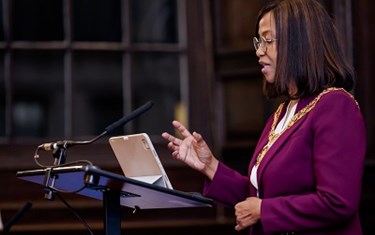 You don’t need me to remind you that the Green Belt has become a lightning rod for public and political debate. It has become the rallying cry for a variety of interest groups either to be protected at all costs or to be stripped away to help everyone, including professionals and local communities address the housing crisis.
You don’t need me to remind you that the Green Belt has become a lightning rod for public and political debate. It has become the rallying cry for a variety of interest groups either to be protected at all costs or to be stripped away to help everyone, including professionals and local communities address the housing crisis.
Most recently politicians of various stripes have waded into the debate proposing what could be termed solutions.
However, the voice that has been absent from this in many ways is that of the professionals who have to assess, support and operate within greenbelt policies; namely planners.
It’s for that reason that I convened a General Assembly (GA) Great Debate on the topic.
The question we put to the GA was: Are the purposes of the green belt still relevant to the 21st century?
The debate was led by Dr Charles Goode from Birmingham University, Mark Hand from Monmouthshire Council and Andrew Taylor of the Vistry Group.
Dr Goode framed the debate clearly around his previous research which identified the current housing crisis against the need for greenbelt preservation. He argued hard for the need for a public debate on this issue to include the views of planners. He was also keen to point out that Green Belt policy was only one side of the coin.
The other side that appeared to have fallen by the wayside was a national plan with strategic locations for growth that would counterbalance the restrictive elements of the Green Belt itself.
Mark Hand, provided the view from Wales, which only has one sliver of green belt between Newport and Cardiff. Instead, they take a green wedge approach, which is reviewed as part of the plan-making process, which allows for greater flexibility and pragmatism. They do, however, face an emerging issue in relation to Future Wales 2040, which is considering the introduction of Green Belt.
This would appear to bring the unforeseen policy impact of having to consider potential developments in areas that are being considered for Green Belt in the North-East and South-East.
To close the panel discussion the GA heard from Andrew Taylor to provide the voice of developers. He highlighted some of the unintended consequences of Green Belt and the ways in which housing and developments were contorting themselves to fit into the existing system.
He made the case that whether planners liked it or not the Green Belt had been hugely politicised which made it incredibly difficult to navigate. This political heat and light, according to Andrew, involves all sides retreating into emotive language that doesn’t deliver proper planning and, in some cases, means active harm to local environments.
However, he did recognise a few lights on the horizon. The recent APPG report calling for planning to be sexy again included the call for a proper conversation about planning. He also highlighted the work of Harlow, Gilsden and Garden Town, where they had cooperated across boundaries to develop a sustainable solution.
Hearing from different sides of the debate and recognising the different perspectives came away with a clear view that without strategic planning across all our nations we are planning with one hand tied behind our back.
This is not an issue that is going to disappear. It is a topic of discussion that will continue to dominate political and public conversations. Therefore, it is richly rewarding to have taken part in detailed and informed discussions at the General Assembly. As with the other topics we have discussed at each General Assembly this year we will be capturing the thoughts and views from the debate and sharing them with the relevant committees and panels throughout the RTPI.


